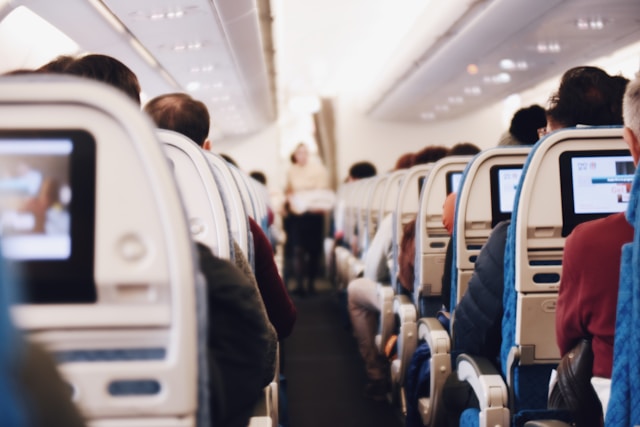Severe turbulence on Singapore Airlines flight SQ321 leaves 20 passengers in ICU, including three Australians, and results in one death
Three Australians remain in intensive care in a Bangkok hospital after their Singapore Airlines flight experienced severe turbulence earlier this week. The turbulence struck flight SQ321 from London to Singapore on Tuesday, resulting in the plane making an emergency diversion to Bangkok. A 73-year-old British man died during the incident.
The three Australians are among 20 passengers being treated in intensive care at Samitivej Srinakarin Hospital in Bangkok. The group includes six Britons, six Malaysians, two Singaporeans, and one person each from Hong Kong, New Zealand, and the Philippines. Nine of these patients have undergone surgery, with five more awaiting procedures.
An Australian Department of Foreign Affairs and Trade spokesperson confirmed that 12 Australians and one permanent resident remain in the Bangkok hospital, with one Australian having been discharged. Many of the hospitalized individuals sustained head injuries, according to Thai officials.
An Adelaide man shared that his wife, also a passenger, could remain in the hospital for weeks due to severe injuries. She had been standing when the plane suddenly dropped, causing her significant harm.
Singapore Airlines CEO Goh Choon Phong reported that out of the 211 passengers and 18 crew members onboard the Boeing 777, 79 passengers and six crew remain in Bangkok. Most of them are hospitalized. Aviation investigators, including technical advisors from the US National Transportation Safety Board, arrived in Bangkok on Wednesday to examine the incident.
Despite the chaos, passengers who were well enough to travel began leaving Bangkok. On Wednesday, 131 passengers boarded a special flight to Singapore. Josh Silverstone, a 24-year-old passenger from South London, was discharged with a cut above his eye and a chipped tooth. He recounted waking up on the floor of the plane, disoriented and injured.
“I didn’t realize what happened. I must have hit my head somewhere. Lots of people hit their heads. Everyone was bleeding,” Silverstone said. He added that he felt so ill upon landing that he couldn’t stop vomiting and struggled to walk.
Beverley Mayers, who escaped injury, described the experience as “sheer terror.” “The whole plane was shuddering. Great pieces were falling off and dropping on the floor, people getting hit in the head,” she said.
Newlyweds Ali and Ramiza Bukhari were flying back from their honeymoon when the turbulence hit. Ali Bukhari described the ordeal as “a very, very traumatic experience.” At the time of the turbulence, flight attendants were serving breakfast. Coffee and cups of water were thrown into the air, and people’s phones, shoes, and cushions were flung around the cabin.
Photographs from inside the cabin show a scene of devastation: oxygen masks and panels hanging from the ceiling, food and drinks scattered across the floor, and luggage strewn about. Bloodstains were visible on the cabin carpets, and overhead plastic panels were broken from the impact of passengers’ heads slamming into them.
Analysis:
The turbulence experienced by flight SQ321 underscores the potential dangers of air travel, even when flying with reputable airlines. This incident has sparked discussions about passenger safety, emergency protocols, and the psychological impact of such traumatic events.
From a political perspective, the Australian government faces pressure to ensure the safety and well-being of its citizens abroad. The involvement of multiple nationalities highlights the international nature of aviation safety and the need for cooperation between countries in addressing such incidents. The response from the Australian Department of Foreign Affairs and Trade underscores the importance of diplomatic channels in providing support to affected citizens.
Sociologically, the incident highlights the varying degrees of trauma experienced by passengers. Passengers like Josh Silverstone and Beverley Mayers provide firsthand accounts of the terror and confusion during the turbulence. These narratives offer insight into the immediate psychological impact and the varying ways individuals cope with such events.
Economically, the incident could have ramifications for Singapore Airlines. The airline might face scrutiny regarding its handling of the situation and the adequacy of its safety protocols. While turbulence is often unpredictable, ensuring passenger safety and minimizing injuries is crucial for maintaining public trust. Additionally, the cost of medical treatments, potential lawsuits, and flight diversions could impact the airline’s financial standing.
Locally, hospitals in Bangkok have had to accommodate an influx of patients with severe injuries, showcasing the importance of emergency medical response capabilities. The Samitivej Srinakarin Hospital’s handling of the situation reflects the readiness of local healthcare facilities to manage large-scale emergencies.
From a psychological perspective, the traumatic experience of severe turbulence can lead to long-term effects on passengers. Many might develop a fear of flying, requiring psychological support to overcome. The visible injuries and bloodstains in the cabin emphasize the physical and emotional toll such incidents can have.
The incident also brings attention to the importance of in-flight safety measures. Passengers standing or moving around the cabin during turbulence are at higher risk of injury. This highlights the need for airlines to enforce seatbelt use and provide clear instructions during unexpected turbulence.
In conclusion, the severe turbulence on Singapore Airlines flight SQ321 serves as a stark reminder of the potential dangers of air travel. It underscores the importance of robust safety protocols, international cooperation, and comprehensive support for affected passengers. As aviation authorities investigate the incident, the findings will likely contribute to enhancing safety measures and preventing similar occurrences in the future.
